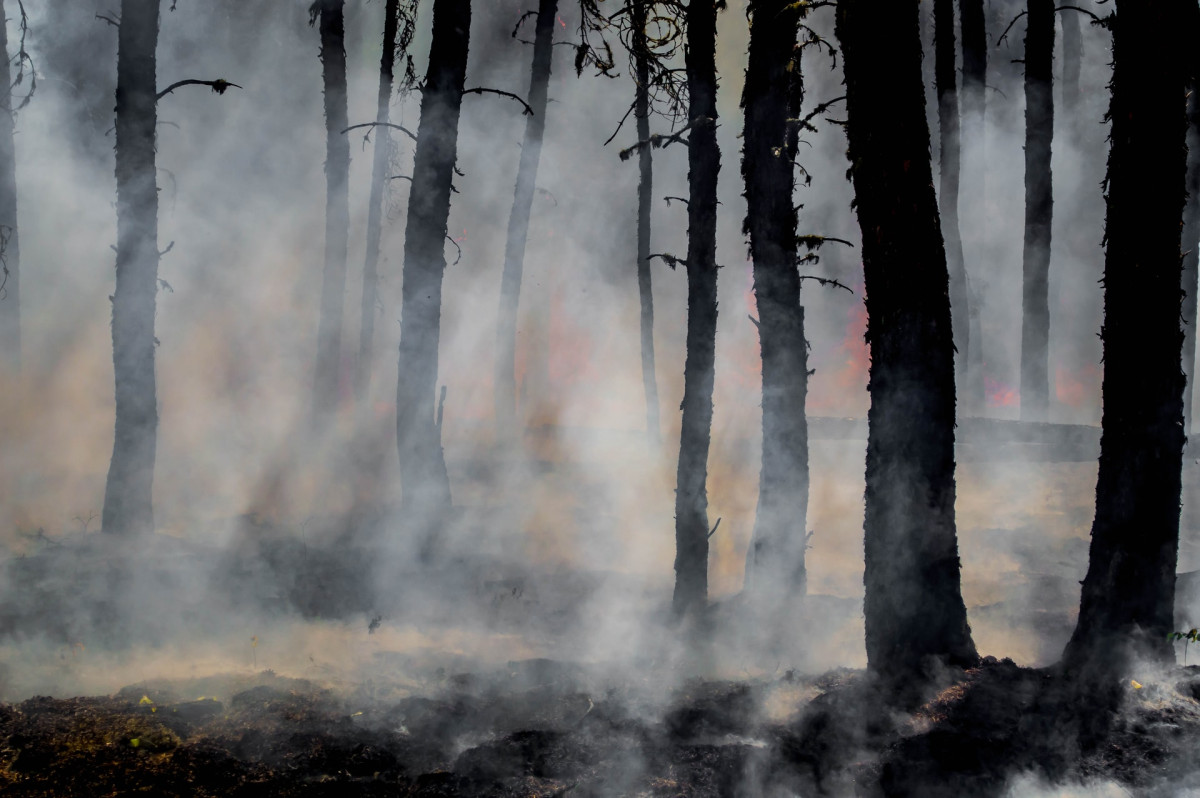WE KNOW OTHER RISKY PLACES WHERE FORESTS COULD BURN, NOT JUST IN HŘENSKO, SAYS JAKUB ZELENÝ, ENVIRONMENTAL ADVISOR TO PEOPLE IN NEED
Published: Aug 2, 2022 Reading time: 2 minutes Share: Share an article"Czech forests are not in good shape. The forests in Bohemian Switzerland, the Moravian-Silesian, and South Moravian regions have low photosynthetic activity and are massively infested by bark beetles, thus creating a higher risk of fires. However, prevention of environmental disasters does exist," says Jakub Zelený, our ecologist and environmental advisor.

Our environmental team has created detailed datasets (with a resolution of 10m) for the entire Czech Republic, identifying places showing signs of environmental stress and, conversely, places in good ecological condition. These datasets assess arable land, forests, pastures, and cities across the country.
The information corresponds with data on environmental stress (fire risk, drought, bark beetle, erosion, urbanisation, etc.) and serves as a basis for ecological risk assessment.
It turns out that the most environmentally degraded and threatened areas are the South Moravian and Moravian-Silesian regions.
As far as forests are concerned, forests in Bohemian Switzerland, the South Moravian, and Moravian-Silesian regions are in the worst condition. The condition of these forests represents a ticking time bomb in the Czech countryside.
On the other hand, our most resilient forests are located in the Šumava mountains, Brdy, Křivoklát and Beskydy.
Our data can serve as a basis for decision-making regarding potential environmental risks—droughts, fires, floods, violent storms, tornadoes, etc. It is publicly available to a wide variety of users — those interested in buying property in the area, insurance companies, farmers, local governments and ministries providing security against disasters. The data can also be used as a basis for ecosystem valuation and accounting.
Although the risk areas are well known, the Czech government does not have the capacity to deal with risks, and communication between different ministries and agencies is fragmented.
The answer to such problems lies in the launching of a coordination unit for "climate resilience"—like the one in Germany, for example. As the results of climate lawsuits against the Czech State suggest, such an institute would be appropriate, as Zelený notes.



